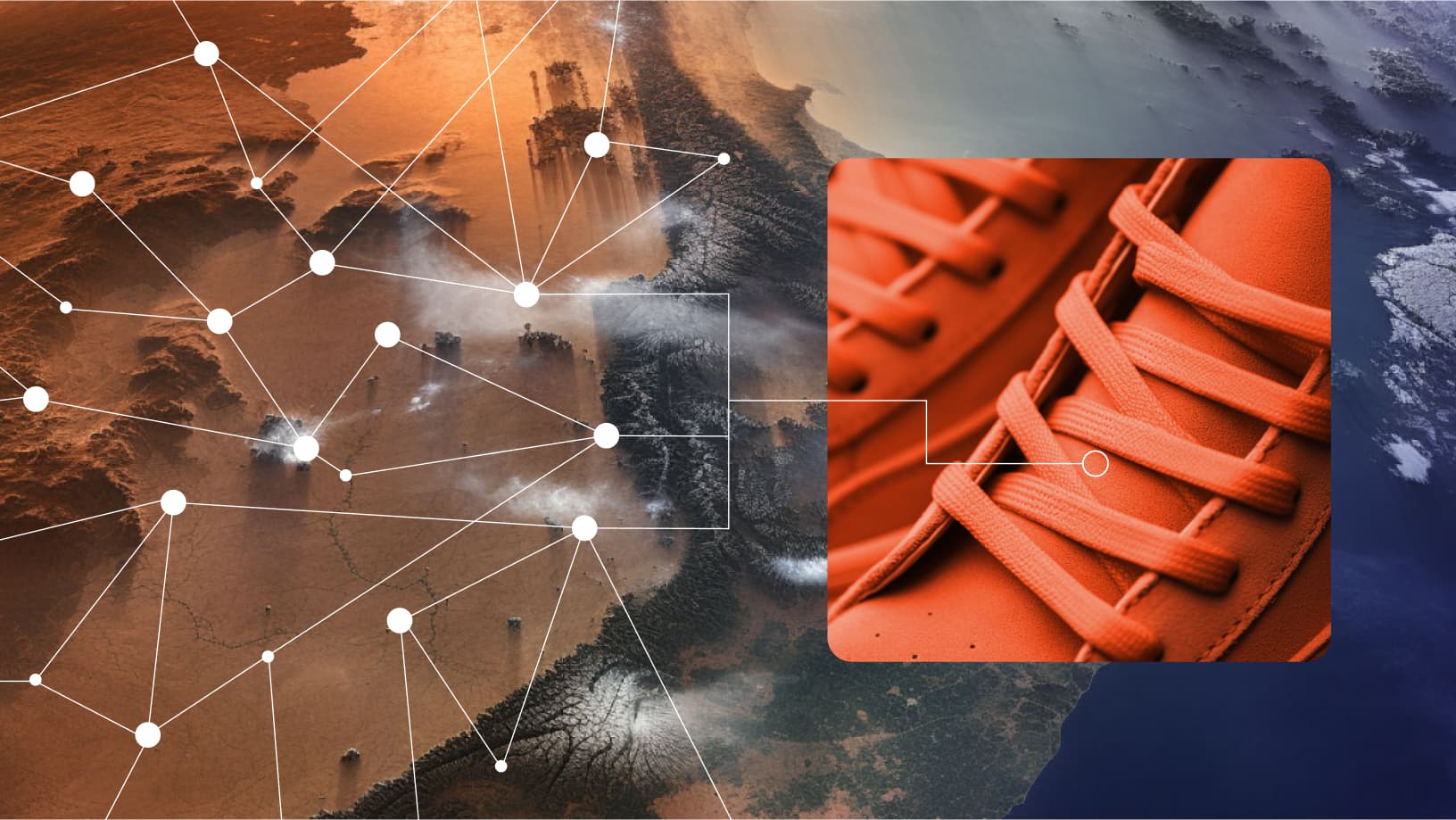Text Updated: 11 September 2024
In the rapidly evolving world of fashion, transparency and sustainability have become paramount. As brands strive to meet the growing consumer demand for ethically produced clothing and increasingly stringent regulatory pressure, a comprehensive understanding of the supply chain has never been more crucial.
Supply chain mapping is a critical tool in this quest, providing much-needed visibility into a company’s manufacturing processes and the intricate network of suppliers involved. This article delves into the significance of primary data collection from suppliers, the role of risk datasets in enhancing this process, and the overarching efficacy of a combined approach to traceability.

The Foundation of Supply Chain Transparency
At the heart of supply chain mapping is the collection of primary data from suppliers. This involves suppliers declaring the networks they work with and source from, including subcontractors, raw material sources, and manufacturing sites.
Primary data collection serves as the foundation of supply chain transparency, enabling brands to have visibility of their production ecosystem. This method ensures that information is accurate, verifiable and actionable, giving companies the data they need to lay the groundwork for a more sustainable supply chain.
Effective Supply Chain Mapping
An effective supply chain mapping strategy involves several critical steps: data collection, analysis, risk screening, continuous monitoring and updating. When implemented effectively, each of these steps plays a vital role in creating a transparent, responsible, and efficient supply chain.
Mapping the supply chain
The first step in supply chain mapping is to collect data about various suppliers and facilities involved in handling different materials.. The aim is to obtain timely, accurate and comprehensive information that can be verified using transactional documents. Primary data collection is necessary to understand the specifics of the supply chain, down to granular details of the exact facilities involved in each process. This goes beyond trade data, which can only showcase cross-border trade relationships, and can help companies to action beyond trade-related risks.
Continuous Monitoring and Updating
The dynamic nature of supply chains requires continuous monitoring at a seasonal or shipment level. At a raw material level, supply chains are especially vulnerable to climate-related risks and seasonal variations. One-time or historical data is not sufficient information for companies to understand and navigate the ongoing supply chain fluctuations they are exposed to. Consistent mapping ensures that the supply chain remains transparent to the company, allowing them to make strategic business decisions that align with their sustainability goals.
For example, when a company collects accurate and current data on emissions in a specific supply chain tier, then decision-makers can respond and adjust purchasing practices accordingly to achieve their emissions reduction targets. Continuous monitoring also helps in identifying new opportunities for improvement and innovation within the supply chain, such as supporting suppliers in upgrading their energy sources to lower-impact alternatives.
Enhancing Transparency with Risk Screening
Alongside collecting primary data from suppliers, companies should also screen their supply chains with risk datasets to help identify areas of concern. These will differ for each supply chain and can include a range of environmental and social issues like labor rights abuses. These datasets provide an additional layer of scrutiny, enabling brands to assess the potential risks associated with their tier-1 suppliers and their declared networks. Real-time insights into the supply chain can empower brands with the ability to implement corrective measures or strategic improvements, fostering resilience and improved ESG performance. By embracing continuous monitoring and risk screening, brands can safeguard their operations against unforeseen risks and secure a competitive edge in an ever-evolving global regulatory landscape. Fortunately, risk assessment can be automated, giving companies peace of mind and confidence in their supply chains. Learn more about TrusTrace for Forced Labor Prevention.
Make it actionable
With primary data and risk screening, you can collect more detailed data from the supply chain about manufacturing and compliance practices, third-party certifications, and other important metrics. Together, these will give you insight into the areas that require improvement. Once these areas are identified, brands can build corrective action plans in collaboration with suppliers to continuously improve their sustainability performance. Collected data can be used to calculate the carbon footprint of a particular product, to help improve customer communication, and to comply with digital labeling and digital product passport requirements.
Conclusion
The path to achieving transparency and sustainability in the fashion industry is complex and multifaceted. By adopting a comprehensive approach that includes primary data collection from direct suppliers, enhanced by risk screening and supported by ongoing data collection, brands can effectively map and manage their supply chains. This approach not only helps to identify and mitigate risks but also builds consumer trust by demonstrating a commitment to ethical and sustainable business practices. As the industry moves forward, the integration of these methodologies will be crucial in shaping a more transparent, accountable, and sustainable fashion ecosystem.
consider TrusTrace
As the leading traceability and compliance platform, TrusTrace is proven to successfully collect primary data for a complete view of your supply chain. Ensure you have complete supply chain visibility to meet the growing demand for detailed supply chain data. Speak with one of our experts on implementing a traceability program centered on primary data and effective supplier collaboration. Schedule a call.
